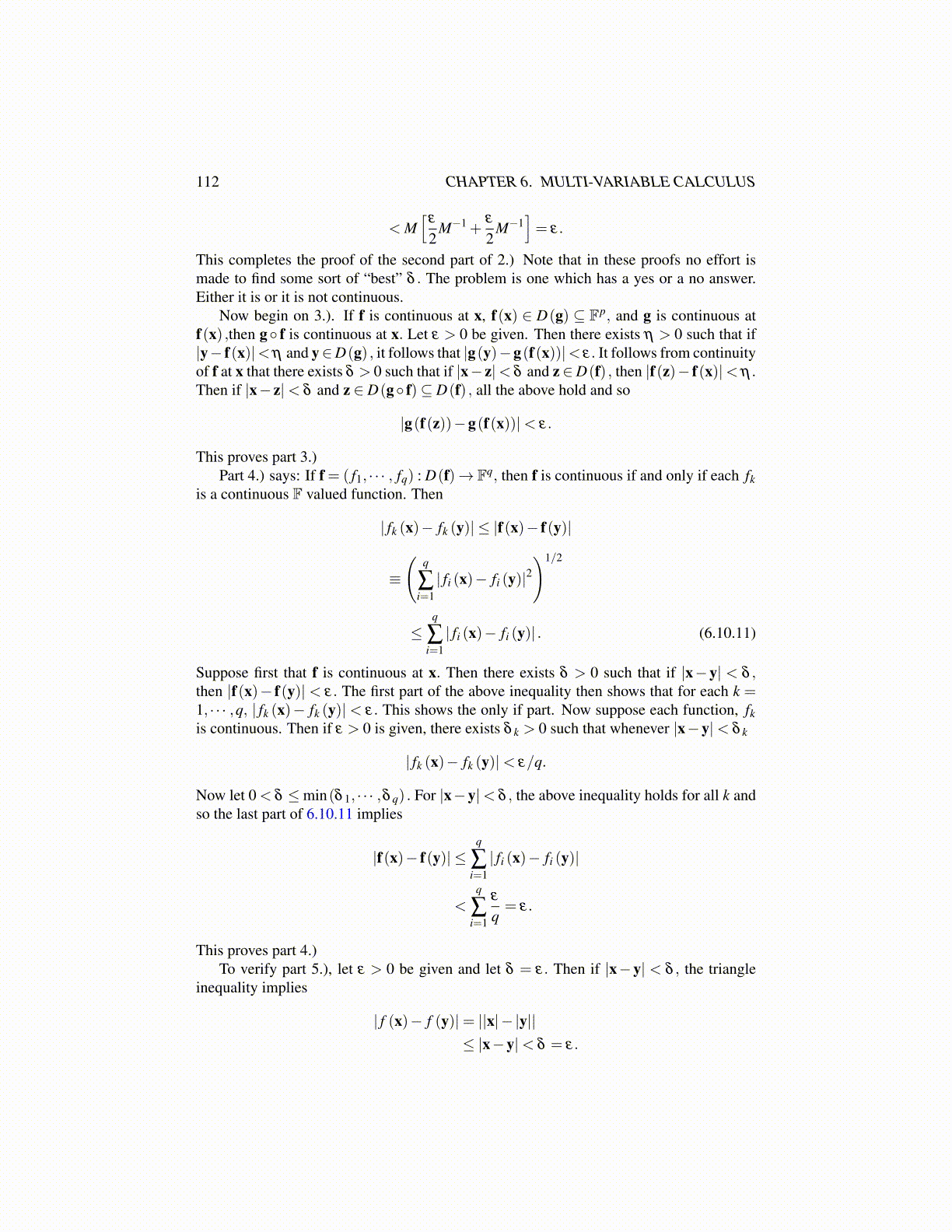
112 CHAPTER 6. MULTI-VARIABLE CALCULUS
< M[
ε
2M−1 +
ε
2M−1
]= ε.
This completes the proof of the second part of 2.) Note that in these proofs no effort ismade to find some sort of “best” δ . The problem is one which has a yes or a no answer.Either it is or it is not continuous.
Now begin on 3.). If f is continuous at x, f(x) ∈ D(g) ⊆ Fp, and g is continuous atf(x) ,then g◦ f is continuous at x. Let ε > 0 be given. Then there exists η > 0 such that if|y− f(x)|<η and y∈D(g) , it follows that |g(y)−g(f(x))|< ε. It follows from continuityof f at x that there exists δ > 0 such that if |x− z|< δ and z∈D(f) , then |f(z)− f(x)|< η .Then if |x− z|< δ and z ∈ D(g◦ f)⊆ D(f) , all the above hold and so
|g(f(z))−g(f(x))|< ε.
This proves part 3.)Part 4.) says: If f = ( f1, · · · , fq) : D(f)→ Fq, then f is continuous if and only if each fk
is a continuous F valued function. Then
| fk (x)− fk (y)| ≤ |f(x)− f(y)|
≡
(q
∑i=1| fi (x)− fi (y)|2
)1/2
≤q
∑i=1| fi (x)− fi (y)| . (6.10.11)
Suppose first that f is continuous at x. Then there exists δ > 0 such that if |x−y| < δ ,then |f(x)− f(y)| < ε. The first part of the above inequality then shows that for each k =1, · · · ,q, | fk (x)− fk (y)| < ε. This shows the only if part. Now suppose each function, fkis continuous. Then if ε > 0 is given, there exists δ k > 0 such that whenever |x−y|< δ k
| fk (x)− fk (y)|< ε/q.
Now let 0 < δ ≤min(δ 1, · · · ,δ q) . For |x−y|< δ , the above inequality holds for all k andso the last part of 6.10.11 implies
|f(x)− f(y)| ≤q
∑i=1| fi (x)− fi (y)|
<q
∑i=1
ε
q= ε.
This proves part 4.)To verify part 5.), let ε > 0 be given and let δ = ε. Then if |x−y| < δ , the triangle
inequality implies
| f (x)− f (y)|= ||x|− |y||≤ |x−y|< δ = ε.